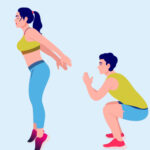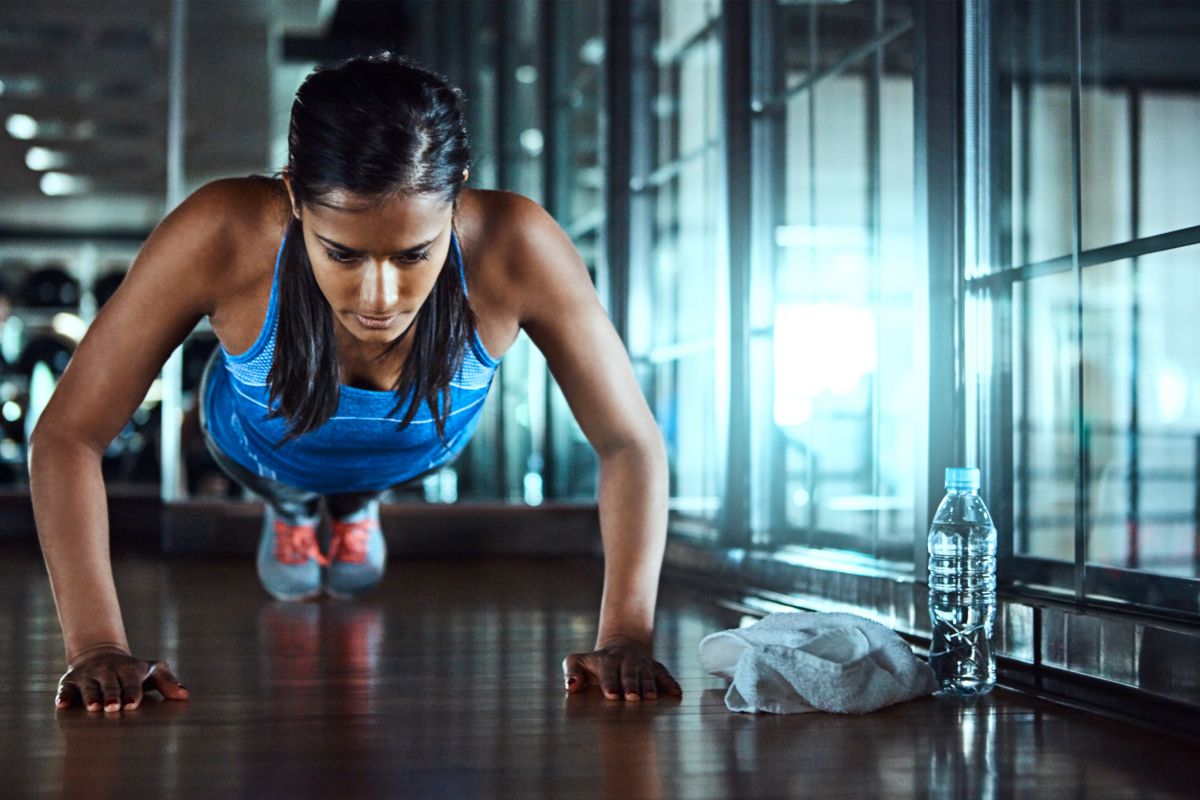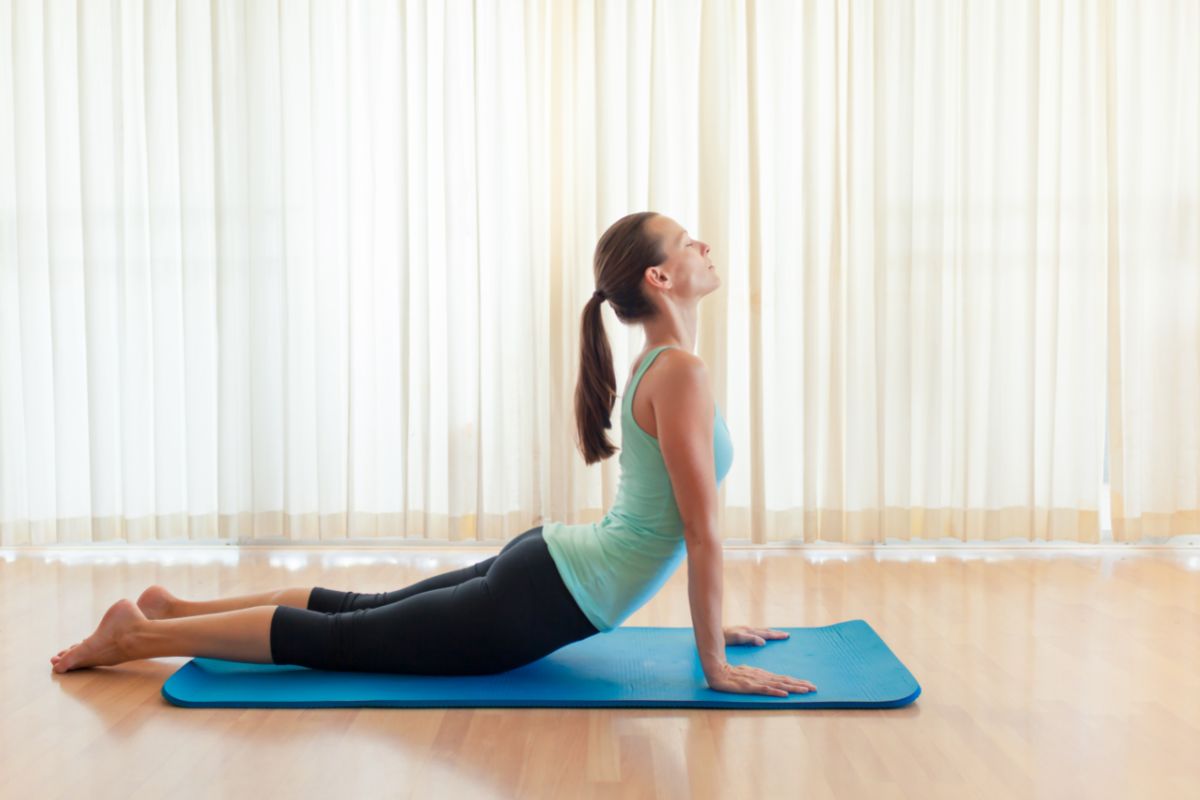One of the most intimidating and misunderstood exercises in the gym are the good ole’ fashioned pull-ups, or chin ups. However, few exercises work the upper body and provide grip strength like the pull-up!
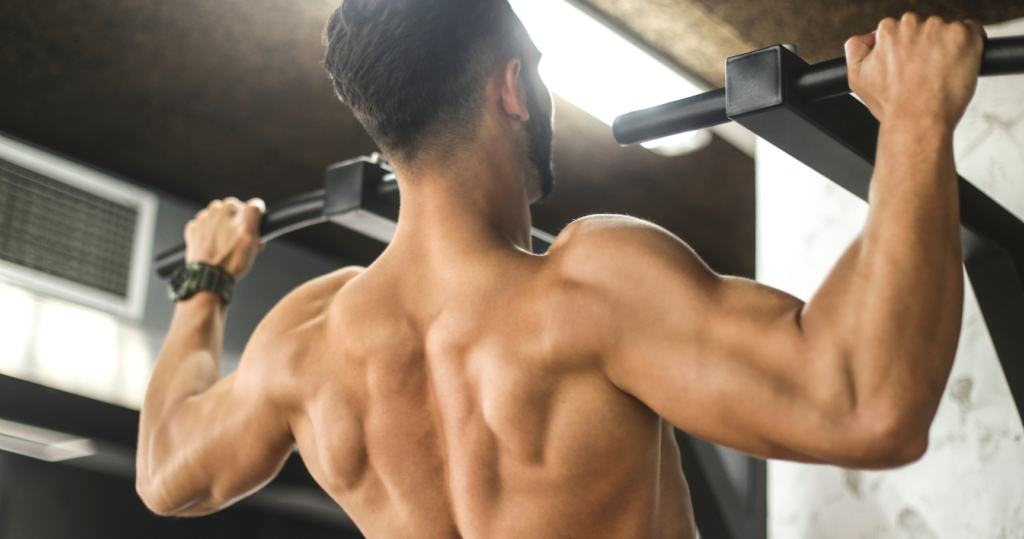

Many avoid the pull-up because they know how difficult the exercise can be and they are concerned that they will look weak if they can only do a rep or two.
Or less!
Also, many believe they can avoid the pull-up and feel they can work the same muscles just as effectively through other exercises.
Especially since performing pull-ups only requires using your body weight, some even think the pull-up is an inferior method of strength training versus weighted exercises.
Well, we will lay out what are the top 4 benefits of pull-ups as we see them and you can decide.
Why Consider The Pull-Up?
Some exercises make you strong but don’t really do anything for your shape. We would say squats or deadlifts fall into this category.
Other exercises make you defined and do a great job with your shape, however, don’t do much for your strength and fitness. We would say tricep kickbacks or concentration curls fall into this category.
So, where do pull-ups fall you might ask?
Well, the great thing about pull-ups is they do both and will do wonders for your upper body!
Not only do pull-ups strengthen an abundance of muscles in your back, shoulders, and arms, but it also does a great job of adding mass to these areas and giving you an impressive “v-shape” look.
There are only a handful of exercises that fall into the “both” category, and pull-ups are certainly in that category!
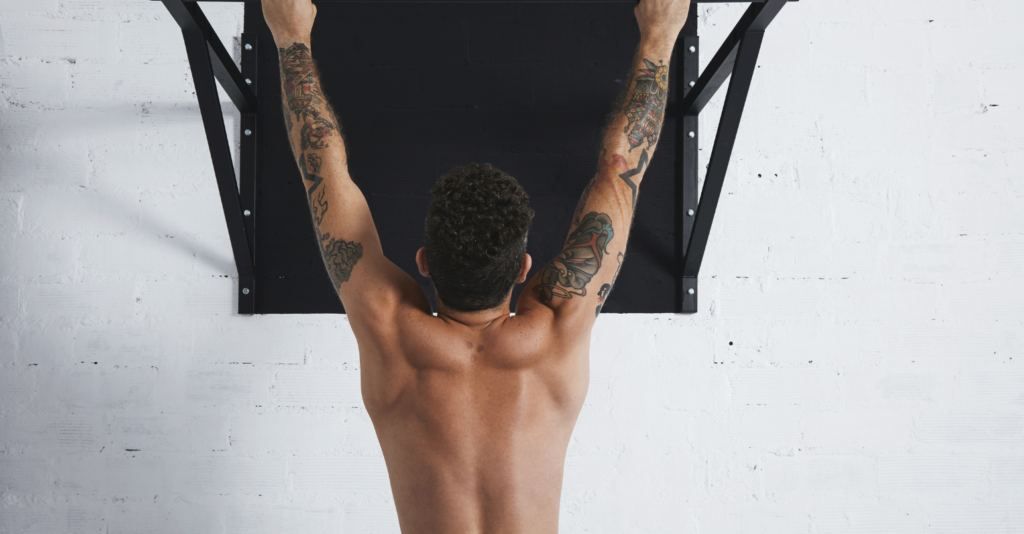

Pull-Ups Work Many Muscles
The number one reason everyone should include pull-ups in their workout routine is due to the number of muscles that benefit from the pull-up.
Your back and back muscles are one of the largest muscle groups in your body.
Most people are familiar with the latissimus dorsi, otherwise known as the lats, as these are the biggest muscles in the back and the muscle some people refer to as the “wings”.
The second most popular muscle in the back is the trapezius or traps, however, most people incorrectly think these muscles are part of the shoulder.
What most people aren’t aware of are the other muscles in the back, such as the tres major muscles, tres minor muscles, rhomboid muscles, erector spinae muscles, and infraspinatus muscles.
Say what, you say?
Okay, we’ll back off with our anatomy lesson. What’s important is that you know there are a ton of good-sized muscles in your back and pull-ups work them all!
Plus you will gain tremendous grip strength!


Pull Ups Improve Your Posture
How do pull-ups improve your posture, you wonder?
Pull-ups elongate your spine and stretch the muscles in your back which in turn improves your posture.
Think of the countless hours in the day when you are sitting in a car, on a chair at work, or the couch at home.
These are all hours in which your spine is in an improper position most of the time and getting compressed, which leads to poor posture.
Pull-ups improve your posture and help to reduce this compressing action by stretching and elongating your spine.
This elongating action is very beneficial to your posture and will allow you to pull your shoulders back and properly position your spine.
As well, pull-ups also stretch and open the front of your chest known as the anterior chest wall.
This portion of your chest, also known as the sternum, is the vertical bone of your chest that runs between your two chest muscles, also known as your pecs (pectoralis major muscles).
Who doesn’t like a good bench press workout?
Well, these types of press workouts are great for your muscles but are not so great for your posture as they cause your front to contrast, pulling your shoulders forward.
When you do a proper pull-up, not only are you concentrating on your back muscles, but as you lift yourself up you are also expanding your front chest area and upper body.
So, to recap, the benefits of pull-ups include stretching and elongating the front and back of your body.
What a deal!
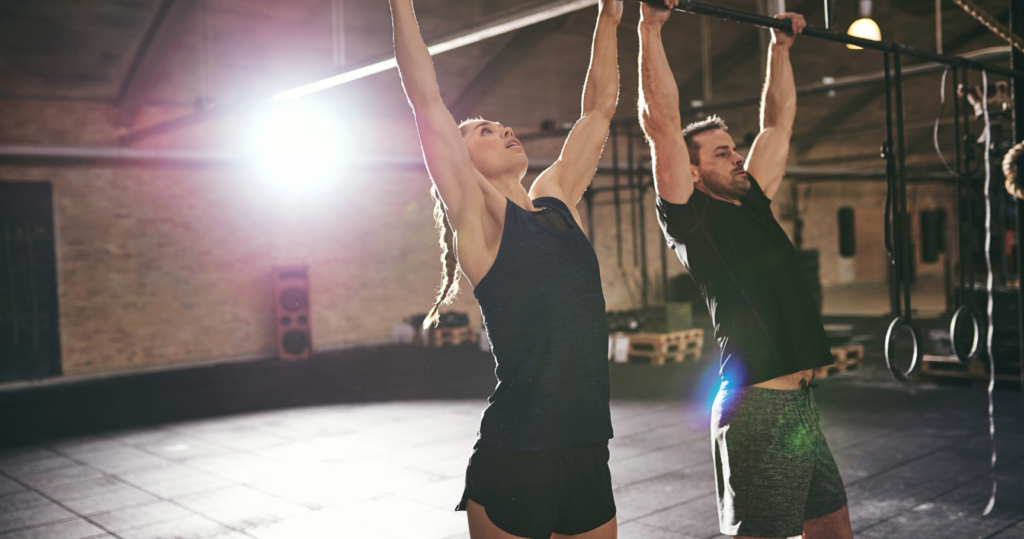

Pull-Ups Work Your Core
The number three reason why you should work pull-ups into your exercise routine is that it is excellent for your core!
It may not seem like you’re getting much core work in when doing pull-ups, however, when you perform pull-ups, you tighten your core completely and don’t allow the muscles to relax throughout the entire exercise.
Now, we often coach that the core should remain tight throughout most exercises, however, the reality is, this rarely happens.
When doing a pull-up, the opposite actually happens!
It is nearly impossible to relax your core while doing a pull-up and in a sense force you to work them right along with your back muscles.
We won’t go into all the reasons here why working the core should be a top priority, but feel free to read our other articles dedicated to this exact subject.
Pull-Ups Can Be Done Almost Anywhere


The 4th reason pull-ups should be a staple in your workout routine is that they can be done almost anywhere!
Of course, you can do them on the pull-up bar at your local gym.
But have you thought about the possibility of doing pull-ups at the playground? Think about those jogs around the children’s equipment and doing several pull-ups each time you lap the monkey bars.
Or what about those long hikes? You could pick a tree branch and get a great workout in along with your cardio while enjoying nature.
Or, maybe you have a tree branch in your backyard or the neighborhood park that might work?
The bottom line is that you can enjoy the benefits of pull-ups without exotic equipment, and that should prevent any type of excuse from preventing you from completing your workout.
How To Start Doing Pull-Ups
We started this article by acknowledging that pull-ups can be intimidating.
Trust me, you’re not alone! But thank goodness there are pull-up variations that anyone can do which will allow you to ease into the exercise while developing the needed grip strength along the way.


Here are some ways to ease into doing pull-ups so you don’t feel embarrassed.
- Look to see if your gym has an assisted pull-up machine. With these machines, you place your knees on a pad that assists you while doing pull-ups. You will increase the weight to give you more assistance and decrease the weight to give you less assistance.
- Have a spotter hold your feet while you are doing pull-ups. You can push your feet into the hands of your spotter and use your leg muscles to act as assistance, pushing up just hard enough to complete the repetition.
- If you don’t have a spotter, you can place your feet on a raised object such as a box or barbell. Like using a spotter, use your feet to assist you up and down during the exercise.
- Reverse pull-ups are a great way to get started! Lie flat on a bench press and place your hands on the barbell with a wider grip than you would if you were doing the standard bench press. Now, instead of pressing like you would when doing bench, pull yourself up towards the bar. You can also do this exercise with your feet on the floor if you have a level bar but don’t have a bench, which is often the case at a park.
- Another great modification is to hang from a pull-up bar and pull yourself up as far as you can. While holding yourself in that position, lift your legs straight out from your body (or lift your knees). This will work your back muscles without having to pull yourself all the way to the top. Again, you should not be hanging, but instead, be pulling yourself up as far as you can, using your latissimus dorsi muscles (lats) while lifting your legs.
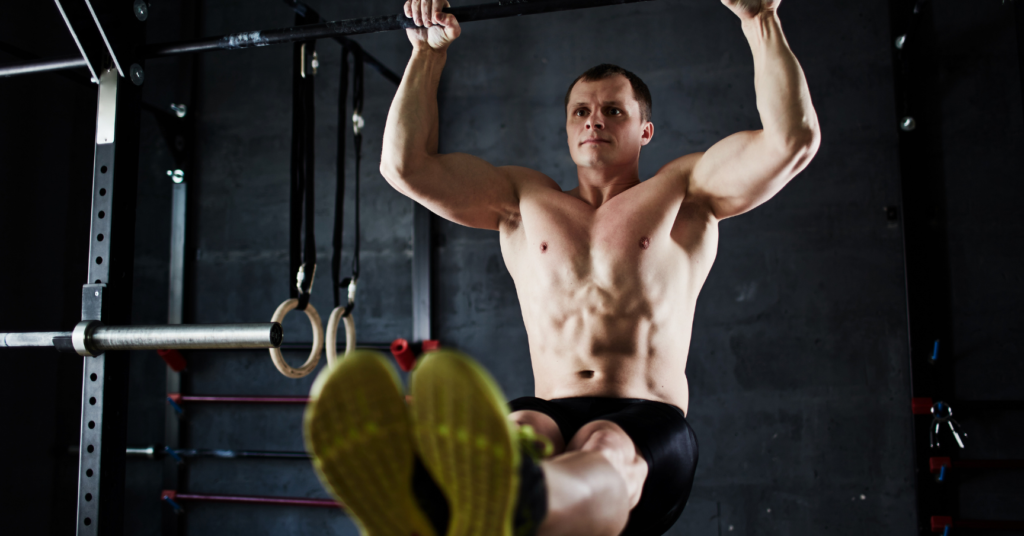

Conclusion
Few exercises are as beneficial as pull-ups. Unfortunately, pull-ups are one of the most avoided exercises.
Hopefully, you now understand the many benefits of pull-ups and can use them as motivation to get started.
Remember, the hardest, but most important part of any fitness goal is the start.
Use the modified examples given above or look for others that are more suitable to you.
There are a variety of modified pull-up exercises that will get you on your way and allow you to comfortably, and confidently, work your way into pull-ups.
Before you know it, you’ll be doing full pull-ups on your own without assistance and have that upper body strength you always dreamed of.
- How To Start HIIT Workouts [Beginner’s Guide] - May 18, 2023
- How To Sneak A Workout In While Taking Care Of Your Baby - March 17, 2023
- How To Build Your Chest With Dumbbells [Guide] - February 9, 2023

